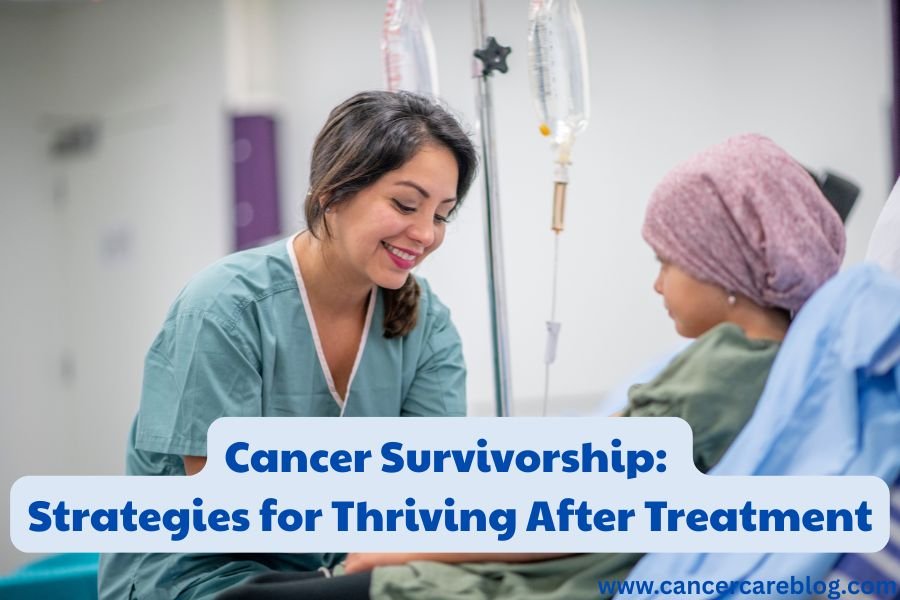Finishing cancer treatment is a huge milestone. But survivorship doesn’t mean the journey is over. For many, life after treatment comes with new challenges—physically, emotionally, and mentally.
Cancer survivorship is not just about staying alive. It’s about truly living again. It’s about finding strength, creating new routines, and feeling hopeful for the future.
In this blog, we’ll talk about practical strategies to help you thrive—not just survive—after cancer treatment ends.
What is Cancer Survivorship?
Survivorship begins the moment treatment ends. It includes your physical recovery, emotional well-being, relationships, and long-term health. Whether you finished treatment last month or 10 years ago, you’re a cancer survivor.
The journey can be overwhelming. Side effects may linger. The fear of recurrence may creep in. But with the right tools and mindset, you can reclaim your life.
Common Challenges Survivors Face
Life after cancer brings unique issues. Many survivors don’t expect them. Here are a few you may recognize:
-
Fatigue that lingers for months or years
-
Chemo brain or memory and focus problems
-
Anxiety and depression
-
Fear of cancer coming back
-
Body changes after surgery or treatment
-
Shifting relationships with family, friends, and coworkers
-
Work and financial stress
These are real—and you’re not alone.
Strategy 1: Create a Survivorship Care Plan
After cancer treatment, you need more than hope. You need a plan.
A survivorship care plan is a personalized guide that includes:
-
A summary of your treatments
-
Follow-up appointment schedules
-
Monitoring tests for recurrence
-
Management plans for long-term side effects
-
Health and lifestyle recommendations
Ask your oncology team to create one. It keeps everyone—doctors and you—on the same page.
Strategy 2: Focus on Nutrition
Food is medicine. A healthy diet helps your body heal and lowers the risk of recurrence.
What to eat:
-
Colorful fruits and vegetables (rich in antioxidants)
-
Lean protein (fish, tofu, beans)
-
Whole grains (brown rice, oats, quinoa)
-
Healthy fats (avocado, olive oil, nuts)
What to limit:
-
Processed foods
-
Sugary snacks
-
Red and processed meats
-
Alcohol (limit or avoid)
Cancer nutrition is not about strict diets. It’s about fueling your recovery.
Strategy 3: Move Your Body (Gently)
You don’t need to train for a marathon. Even light movement helps. Exercise:
-
Reduces fatigue
-
Improves mood
-
Helps sleep
-
Strengthens the heart and bones
-
Lowers recurrence risk in some cancers
Try walking, stretching, yoga, or swimming. Start small—10 minutes a day—and build from there. Always get your doctor’s okay first.
Strategy 4: Care for Your Mental Health
The emotional scars of cancer may last longer than physical ones. Depression, anxiety, and post-traumatic stress are common among survivors.
How to cope:
-
Therapy: A psychologist or counselor can help you process your emotions
-
Support groups: Talking with other survivors helps you feel less alone
-
Mindfulness: Meditation, journaling, or deep breathing reduce anxiety
-
Creative outlets: Art, music, and writing give you space to express yourself
There is no shame in asking for help. Healing includes your mind too.
Strategy 5: Build a Support System
You don’t have to do this alone. Surround yourself with people who care.
-
Join survivor support communities (online or local)
-
Stay connected with friends and family
-
Keep open communication with your care team
-
Let people know how they can help you
Sometimes, just having someone to talk to makes all the difference.
Strategy 6: Keep Up With Medical Appointments
Follow-up care is key to long-term wellness. You’ll need regular checkups to:
-
Monitor for signs of recurrence
-
Catch any late treatment side effects
-
Stay ahead of other health risks
Don’t skip appointments—even if you feel okay. Ongoing cancer monitoring keeps you one step ahead.
Strategy 7: Return to Work or Find New Purpose
Going back to work after cancer can feel intimidating. Be kind to yourself. Start part-time if needed. Know your rights—your employer must make reasonable accommodations.
Or you may discover a new purpose altogether. Many survivors:
-
Volunteer for cancer organizations
-
Become patient advocates
-
Pursue passions they once postponed
-
Start creative projects or businesses
Cancer may have changed you—but it also may have uncovered strength and purpose you never knew you had.
Strategy 8: Address Financial Recovery
Cancer can bring a financial toll. Medical bills, time off work, and long-term care can add up.
Helpful tips:
-
Talk to a hospital social worker or financial advisor
-
Explore nonprofits that assist cancer survivors
-
Ask about financial aid programs or bill negotiation options
You don’t have to carry this burden silently. Resources are out there.
Strategy 9: Celebrate Milestones
Every month, every year after treatment is a milestone. Mark them.
-
Throw a small party
-
Write a letter to your past self
-
Take a trip or treat yourself
-
Share your story to inspire others
You’ve earned these moments. Celebrate them fully.
Final Thoughts: You’re Not Just Surviving—You’re Living
Cancer survivorship is a lifelong chapter. But it can be one of the most powerful. You’ve faced something most people can’t imagine—and you’re still standing.
You deserve peace, health, and joy. Keep moving forward. You are more than your diagnosis.
You’re not just a survivor. You’re a thriver.



